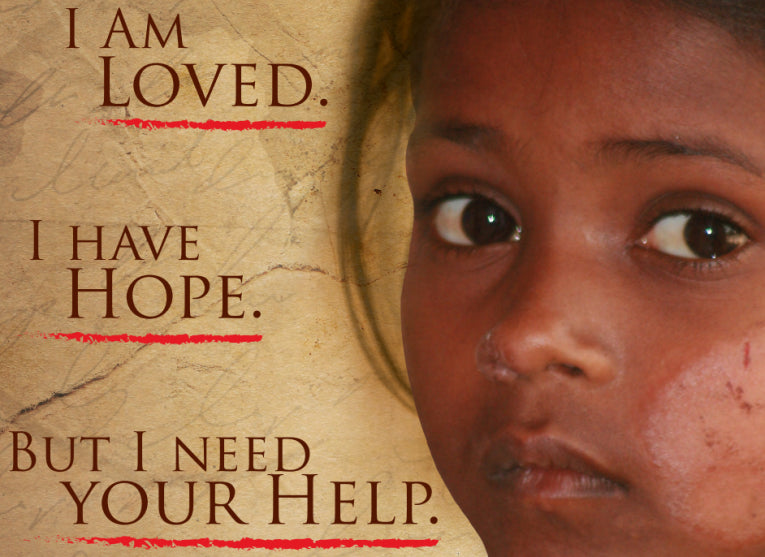Leprosy, or more properly Hansen's disease, is one of the oldest recorded diseases in the world and has affected humanity for more than 4,000 years. It is an infectious chronic disease that targets the nervous system, especially the nerves of the cooler parts of the body such as the hands, feet and face.
Skin lesions are the primary external sign and if it is left untreated the disease can be progressive and cause permanent damage to the skin, nerves, limbs and eyes.
The old stories of body parts falling off as a result of the disease are something of a myth, because what actually happens is that secondary infections can cause tissue loss and result in fingers and toes becoming shortened and deformed as cartilage is absorbed into the body.
Although it is now known to be a bacterial disease, it was traditionally thought to be highly contagious or even hereditary and from earliest times people suffering from the disease were required to wear special clothing and carry a bell or a wooden clapper to warn other people as they approached.
Sufferers were prohibited from visiting public places and forced to live in segregated colonies. Bible stories tell of lepers begging outside the gates of towns.
There was scant support for those suffering from the disease, with no clear idea of its causes and no known effective treatment. At various times blood was used, either as a beverage or as a bath. This included the blood of children, dogs, lambs or even blood from dead bodies. Cobra venom, bee stings and the excreta of climbing fish were also tried along with the administration of arsenic and mercury, but all to no avail. Isolation seemed to be the only answer.
Early examples of support came from Christian missionaries. A prominent example was Father Damien of Molokai. Now venerated as a saint in the Catholic Church, Damien was a Belgian-born priest who at the age of 33 went to work with a colony of 800 lepers on the island of Molokai, in what was then the Kingdom of Hawaii.
During his 16 years in Molokai, where he worked as pastor, medic, advisor and guardian, he was tireless in his efforts to make improvements to the colony and to bring greater respect for the dignity of those who were suffering from the disease.
11 years after his arrival, he scalded his foot and when he felt no pain Damien realised that he had succumbed to the disease himself, but he continued to work in the colony until a month before his death in 1889 at the age of 49. The work of Father Damien and his achievements became a worldwide inspiration for those who were fighting for plight of those suffering from the disease, but there was still no known cure.
In fact in 1873 the Norwegian physician Gerhard Hansen had discovered the causes of the disease and from then on leprosy became known as Hansen's disease. Gradually more information was gathered, which led to greater understanding of the disease and beginnings of the development of treatment. For instance, it is now known that 95% of the population have a natural immunity to leprosy.
By the mid-1930s new treatments were showing signs of success and by the early 1940s the development of the drug, Dapsone, was an important milestone, but the stigma of the disease still remained.
A great international figure in the fight to raise leprosy awareness was the Indian leader Mahatma Gandhi. Traditionally leprosy had been a major problem in India, with sufferers being treated as complete outcasts. Before his assassination on 30thJanuary 1948, Gandhi always went out of his way to befriend these people, not just in India, but in other countries also.
It was the French writer Raoul Follereau who came up with the suggestion of a World Leprosy Day. For many years he was a passionate worker on behalf of people suffering from the disease and during his 32 world tours he claimed to have visited every leprosarium in the world.
In September 1952, in a petition to the United Nations, Raoul Follereau requested that all member states should insist that persons affected by leprosy should be entitled to their rights on an equal basis with all other citizens and should enjoy the same protection from the law.
It was decided in 1952 that a World Leprosy Day should be observed each year to coincide with the Sunday closest to the date of Gandhi's assassination and the 60th date of this observance will be 27th January 2013.
Things have come a long way in the last 60 years. In 1985, 122 countries throughout the world viewed leprosy as being a major public health issue, but the introduction of Multi Drug Therapy in the form of a blister pack has since revolutionised leprosy treatment. Much of the support for this has come from The World Health Organisation (WHO).
In 2011 official reports received from 130 countries indicated that there were now 192,264 cases of leprosy in the world and although new cases continue to be detected each year, this annual number continues to fall. In most countries where the disease was previously highly endemic, great strides have been made towards its elimination.
A crucial factor is to encourage patients and their families to come forward and receive early treatment, since this is the most effective way to prevent disabilities. Historically these groups have been ostracised from their communities and information campaigns are important both to improve understanding of the disease among the larger community and to prevent further transmission.
The ultimate aim is naturally to achieve worldwide elimination of the disease and this is universally considered to be achievable. In 2013 the 60th World Leprosy Day will give particular emphasis to those under-served and marginalized communities that are most at risk from leprosy - those who are often the poorest of the poor.















